前言
通过断点调试理解 NodeJS & CommonJS 的模块机制,先说结论:
NodeJS 中每个文件视作一个模块,每个模块默认可以访问 module、exports、require、__filename、__dirname 变量
NodeJS 中通过将模块源码包裹在 Wrapper 函数中,并通过调用函数传递参数的方式传递默认变量
通过 vm 模块 的 runInThisContext 方法 生成 Wrapper 函数,使用 eval 和 new Function 的方式生成都会出现作用域问题,eval 的作用域为当前上下文,new Function 的作用域为全局上下文
示例代码:
const path = require("path");const fs = require("fs");const vm = require("vm");
function myRequire(_path) { // 计算决定路径 const absolatePath = /* ... */; // 计算文件名 const filename = /* ... */;
// 读取文件源码 const sourceCode = fs.readFileSync(absolatePath, 'utf-8'); // 生成 Wrapper 函数 const fn = vm.runInThisContext( `(function (exports, module, require, __filename, __dirname) { ${sourceCode} });` );
// 定义 module const module = { exports: {} };
// 调用 Wrapper 函数,此时 module 代码执行,并为 module.exports 赋值 fn.apply(module.exports, [module.exports, module, myRequire, filename, absolatePath]);
return module.exports;}
复制代码
大致的流程如此,后面是调试流程,长文警告。
准备调试
调试流程:
新建目录,在目录根路径执行:
新建 index.js 文件,写点代码,并在首行代码处打上断点:
新建 /.vscode/launch.json vscode 调试配置文件:
简单说下调试配置项:
在 vscode 左侧调试面板中,选择我们的配置并运行调试,默认会跳过 node 的启动流程,直接断到我们编写的程序中:
但是可以看到左下角列出来经过的全部程序,我们直接在首先启动的程序文件中打上断点:
接下来就可以开始愉快的调试了。
流程调试
查看最先执行的程序代码:
/** * other code in here... */
if (getOptionValue('--experimental-default-type') === 'module') { require('internal/modules/run_main').executeUserEntryPoint(mainEntry);} else { require('internal/modules/cjs/loader').Module.runMain(mainEntry);}
复制代码
getOptionValue 获取到 nodejs 对应选项的配置值,这里判断 --experimental-default-type 属性值是否是 module,如果是则使用 esm 加载器来执行,可以通过 node --experimental-default-type=module 来进入这个条件。
在调试时可以在调试配置中添加 "runtimeArgs": ["--experimental-default-type=module"] 来配置运行时参数。
我们不关注 type=module 的情况,所以这里直接忽略,进入 else 的判断。
接下来进入 runMain 方法,代码如下:
/** * other code in here... */
function executeUserEntryPoint(main = process.argv[1]) { /** 获取入口代码的路径 */ const resolvedMain = resolveMainPath(main);
/** 判断是否应该使用 esm loader */ const useESMLoader = shouldUseESMLoader(resolvedMain);
let mainURL;
if (!useESMLoader) { /** 使用 commonjs loader */ const cjsLoader = require('internal/modules/cjs/loader'); const { wrapModuleLoad } = cjsLoader; wrapModuleLoad(main, null, true); } else { /** 使用 esm loader */ const mainPath = resolvedMain || main; if (mainURL === undefined) { mainURL = pathToFileURL(mainPath).href; }
runEntryPointWithESMLoader((cascadedLoader) => { return cascadedLoader.import(mainURL, undefined, { __proto__: null }, true); }); }}
复制代码
resolveMainPath 函数比较简单,就是用一堆工具函数来找到真实的入口文件路径,这里不进行说明,来看看 shouldUseESMLoader 的函数的代码:
/** 判断是否应该使用 esm loader */function shouldUseESMLoader(mainPath) { if (getOptionValue('--experimental-default-type') === 'module') { return true; }
/** 用户注册的自定义 loader 列表 */ const userLoaders = getOptionValue('--experimental-loader');
/** 用户注册的预加载模块列表 */ const userImports = getOptionValue('--import');
if (userLoaders.length > 0 || userImports.length > 0) { return true; }
/** 解析入口文件的文件后缀,如果为 mjs 则是 esm,如果是 cjs 则是 commonjs */ if (mainPath && StringPrototypeEndsWith(mainPath, '.mjs')) { return true; } if (!mainPath || StringPrototypeEndsWith(mainPath, '.cjs')) { return false; }
/** 这里是获取到 package.json 中的 type 定义 */ const type = getNearestParentPackageJSONType(mainPath);
if (type === undefined || type === 'none') { return false; }
/** type 为 module 则为 esm 模块 */ return type === 'module';}
复制代码
这里可以看到满足以下几个条件之一则使用 esm loader:
我们依然不关心 esm loader 的相关逻辑,走到 wrapModuleLoad 方法,代码如下:
/** * other code in here... */
/** 这是对内部方法 Module._load 的包装,request 是加载的模块,parent 是父模块,isMain 表示入口模块 */function wrapModuleLoad(request, parent, isMain) { /* ... */ try { return onRequire().traceSync(Module._load, { __proto__: null, parentFilename: parent?.filename, id: request, }, Module, request, parent, isMain); } finally { /* ... */ }}
复制代码
traceSync 方法就是对函数的一层封装,在执行函数前后添加了 hook 代码,主要用于跟踪函数执行,这里执行的是 Module._load 方法,我们继续查看他的代码:
Module._load = function(request, parent, isMain) { /** TIPS: 省略了大部分代码,完整的代码建议自己调试查看 */
/** 判断请求的模块路径是否以 node: 开头,node: 开头的是 nodejs 内置模块 */ if (StringPrototypeStartsWith(request, 'node:')) { const id = StringPrototypeSlice(request, 5);
if (!BuiltinModule.canBeRequiredByUsers(id)) { throw new ERR_UNKNOWN_BUILTIN_MODULE(request); }
const module = loadBuiltinModule(id, request);
return module.exports; }
/** 获取模块的决定路径 */ const filename = Module._resolveFilename(request, parent, isMain); /** 获取缓存 */ const cachedModule = Module._cache[filename];
/** 返回被缓存且已加载完成的模块 */ if (cachedModule !== undefined) { if (cachedModule.loaded) { return cachedModule.exports; } }
/** 获取缓存模块或构建新模块 */ const module = cachedModule || new Module(filename, parent);
/** 标识模块信息 */ if (!cachedModule) { if (isMain) { setOwnProperty(process, 'mainModule', module); setOwnProperty(module.require, 'main', process.mainModule); module.id = '.'; module[kIsMainSymbol] = true; } else { module[kIsMainSymbol] = false; }
/** 缓存模块 */ Module._cache[filename] = module; }
let threw = true;
try { /** 尝试加载模块 */ module.load(filename);
threw = false; } finally { /** 模块加载失败需要清理残留 */ if (threw) { delete Module._cache[filename]; } }
/** 返回模块 */ return module.exports;};
复制代码
核心的加载代码在 module.load 方法中,代码如下:
Module.prototype.load = function(filename) { this.filename = filename; this.paths = Module._nodeModulePaths(path.dirname(filename));
/** 通过文件后缀查找已注册的扩展 */ const extension = findLongestRegisteredExtension(filename);
/** 如果文件以 .mjs 为后缀,且没有注册 .mjs 的扩展,则抛出错误 */ if (StringPrototypeEndsWith(filename, '.mjs') && !Module._extensions['.mjs']) { throw new ERR_REQUIRE_ESM(filename, true); }
/** 调用对应文件后缀的扩展,将 module 实例和模块路径传递 */ Module._extensions[extension](this, filename);
/** 标识已被加载 */ this.loaded = true;
const exports = this.exports; this[kModuleExport] = exports;};
复制代码
load 方法内部通过 findLongestRegisteredExtension 方法查找对应的扩展名,最后调用指定扩展来加载模块,这里的扩展名为 .js,默认在 Module._extension 中注册,他的代码如下:
Module._extensions['.js'] = function(module, filename) { /** 获取模块源码 */ const content = getMaybeCachedSource(module, filename);
let format; if (StringPrototypeEndsWith(filename, '.js')) { /** 获取 package.json 配置 */ const pkg = packageJsonReader.getNearestParentPackageJSON(filename);
if (pkg?.data.type === 'module') { /** 如果启用了 --experimental-require-module,则允许在 type=module 的情况下使用 require */ if (getOptionValue('--experimental-require-module')) { /** 以 esm 模式编译模块 */ module._compile(content, filename, 'module'); return; }
/** 构造错误信息 */ const parent = module[kModuleParent]; const parentPath = parent?.filename; const packageJsonPath = path.resolve(pkg.path, 'package.json'); const usesEsm = containsModuleSyntax(content, filename); const err = new ERR_REQUIRE_ESM(filename, usesEsm, parentPath, packageJsonPath); // Attempt to reconstruct the parent require frame. if (Module._cache[parentPath]) { let parentSource; try { parentSource = fs.readFileSync(parentPath, 'utf8'); } catch { // Continue regardless of error. } if (parentSource) { const errLine = StringPrototypeSplit( StringPrototypeSlice(err.stack, StringPrototypeIndexOf( err.stack, ' at ')), '\n', 1)[0]; const { 1: line, 2: col } = RegExpPrototypeExec(/(\d+):(\d+)\)/, errLine) || []; if (line && col) { const srcLine = StringPrototypeSplit(parentSource, '\n')[line - 1]; const frame = `${parentPath}:${line}\n${srcLine}\n${ StringPrototypeRepeat(' ', col - 1)}^\n`; setArrowMessage(err, frame); } } } throw err; } else if (pkg?.data.type === 'commonjs') { format = 'commonjs'; } } else if (StringPrototypeEndsWith(filename, '.cjs')) { format = 'commonjs'; }
/** 以 commonjs 模式编译源码 */ module._compile(content, filename, format);};
复制代码
继续查看 module._compile 方法,代码如下:
Module.prototype._compile = function(content, filename, format) { /** 删除大部分代码,建议自行调试查看 */
let redirects;
let compiledWrapper; if (format !== 'module') { /** wrapSafe 方法包装模块源码并生成函数,函数作用域与外界隔离 */ const result = wrapSafe(filename, content, this, format); /** compiledWrapper 即是生成的函数 */ compiledWrapper = result.function; }
/** 获取模块所在目录 */ const dirname = path.dirname(filename); /** * * 构建 require 函数,对 module.require 方法的包装, module.require 方法又是对开头介绍的 wrapModuleLoad 函数的包装 * */ const require = makeRequireFunction(this, redirects);
let result; const exports = this.exports; const thisValue = exports; const module = this;
/** 执行生成的包装函数并传递参数 */ result = ReflectApply( compiledWrapper, thisValue, [exports, require, module, filename, dirname] );
return result;};
复制代码
当执行到 ReflectApply 函数内部时,会执行生成的包装函数,继续向下执行会发现断到了我们编写的模块内部:
此时流程基本已经结束,可以看到核心的逻辑基本与 Module 类相关,下面我用 ts 给出 Module 类的主要定义(部分内容忽略)。
Module 类型定义
declare type Exports = { [key: string | symbol]: any };
declare class Module { constructor(id: string, parent: Module);
/** 模块 id,一般为模块绝对路径 */ id: string;
/** 模块路径 */ path: string;
/** module.exports,模块中通过给这个对象新增属性来达到导出目的 */ exports: Exports;
/** 文件名 */ filename: string | null;
/** 是否加载完成 */ loaded: boolean;
/** 外层包裹函数字符串的代理 ["function(module, exports, require, __filename, __dirname) {", "};"] */ wrapper: [string, string];
/** 父模块 */ parent?: Module;
/** 子模块 */ children?: Module[];
/** 缓存模块 */ static _cache: Record<string, Module>; /** 缓存路径 */ static _pathCache: Record<string, Module>; /** 注册扩展 */ static _extensions: Record<string, (module: Module, filename: string) => void>; /** 全局路径 */ static globalPaths: string[];
/** 生成包裹函数 */ wrap(script: string): string;
/** 加载模块 */ load(filename: string): void;
/** 请求模块 */ require(id: string): Exports;
private _compile( content: string, filename: string, format: 'module' | 'commonjs' | undefined ): Exports;
/** 创建 require 函数 */ static createRequire(filename: string | URL): (id: string) => Exports;
/** * 如果用户覆盖了内置模块的导出,此函数可以确保覆盖用于 CommonJS 和 ES 模块上下文 */ static syncBuiltinESMExports(): void;
/** 查找路径 */ private static _findPath(request: string, paths: string[], isMain: boolean): string | false;
/** 根据给定路径查找 node_modules 路径 */ private static _nodeModulePaths(from: string): string[];
/** 获取模块解析路径 */ private static _resolveLookupPaths(request: string, parent: Module): string[];
/** 加载模块 */ private static _load(request: string, parent: Module, isMain: boolean): Exports;
/** 解析模块绝对路径 */ private static _resolveFilename( request: string, parent: Module, isMain: boolean, options: object, paths: string[] ): string;
/** 定义用于解析模块的路径 */ private static _initPaths(): void;
/** 处理通过 “--require” 加载的模块 */ private static _preloadModules(requests: string[]): void;}
复制代码
--end

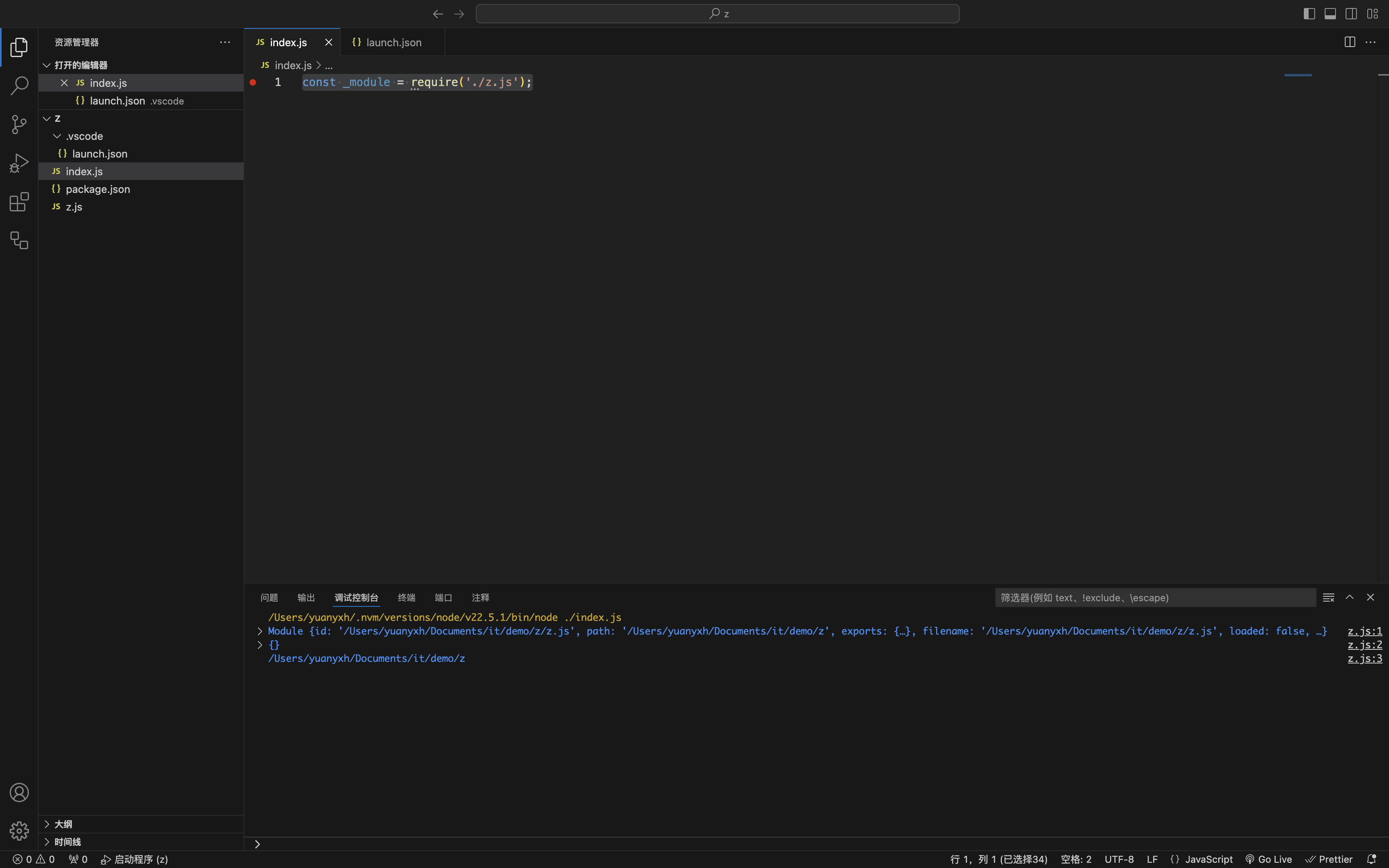
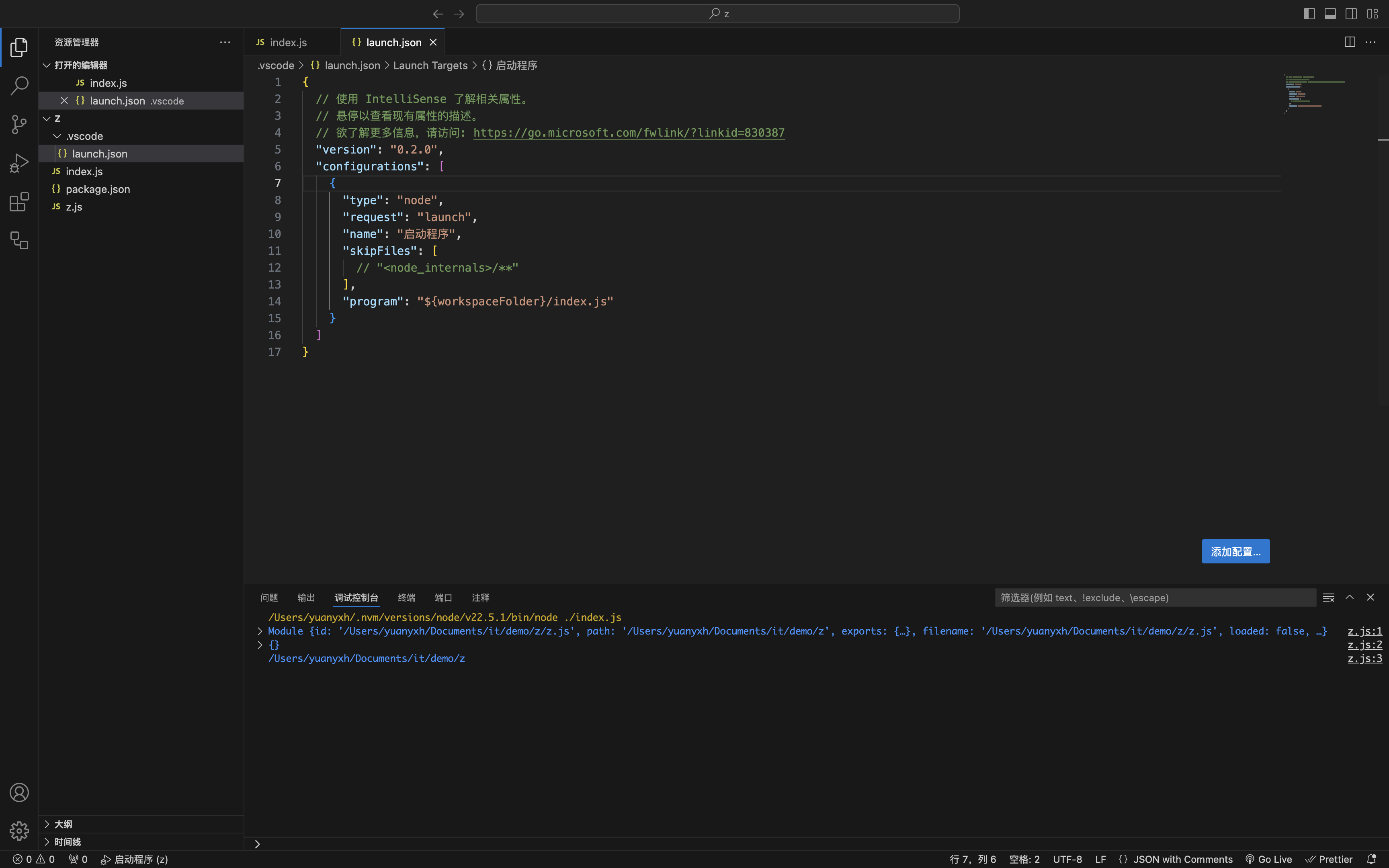

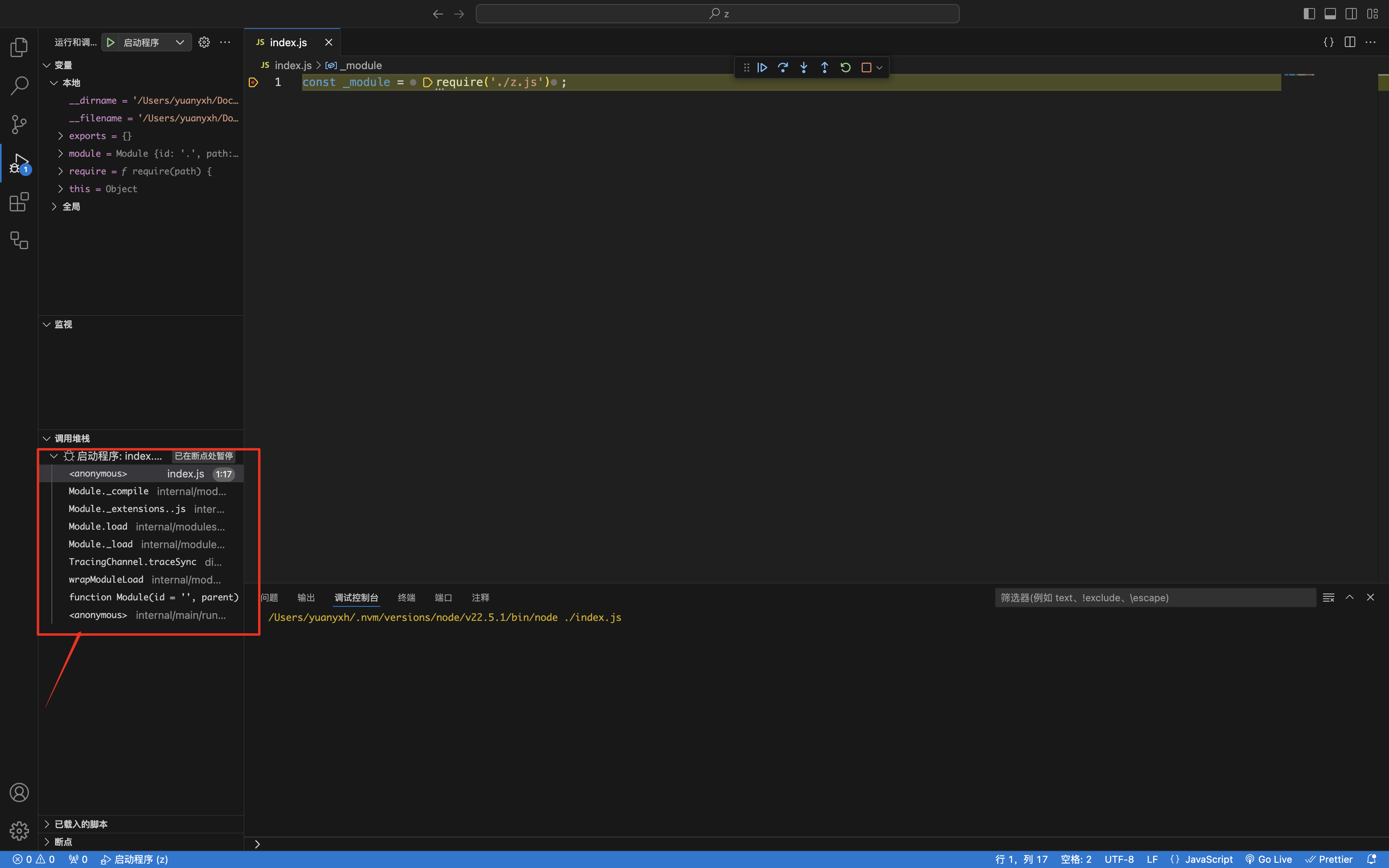
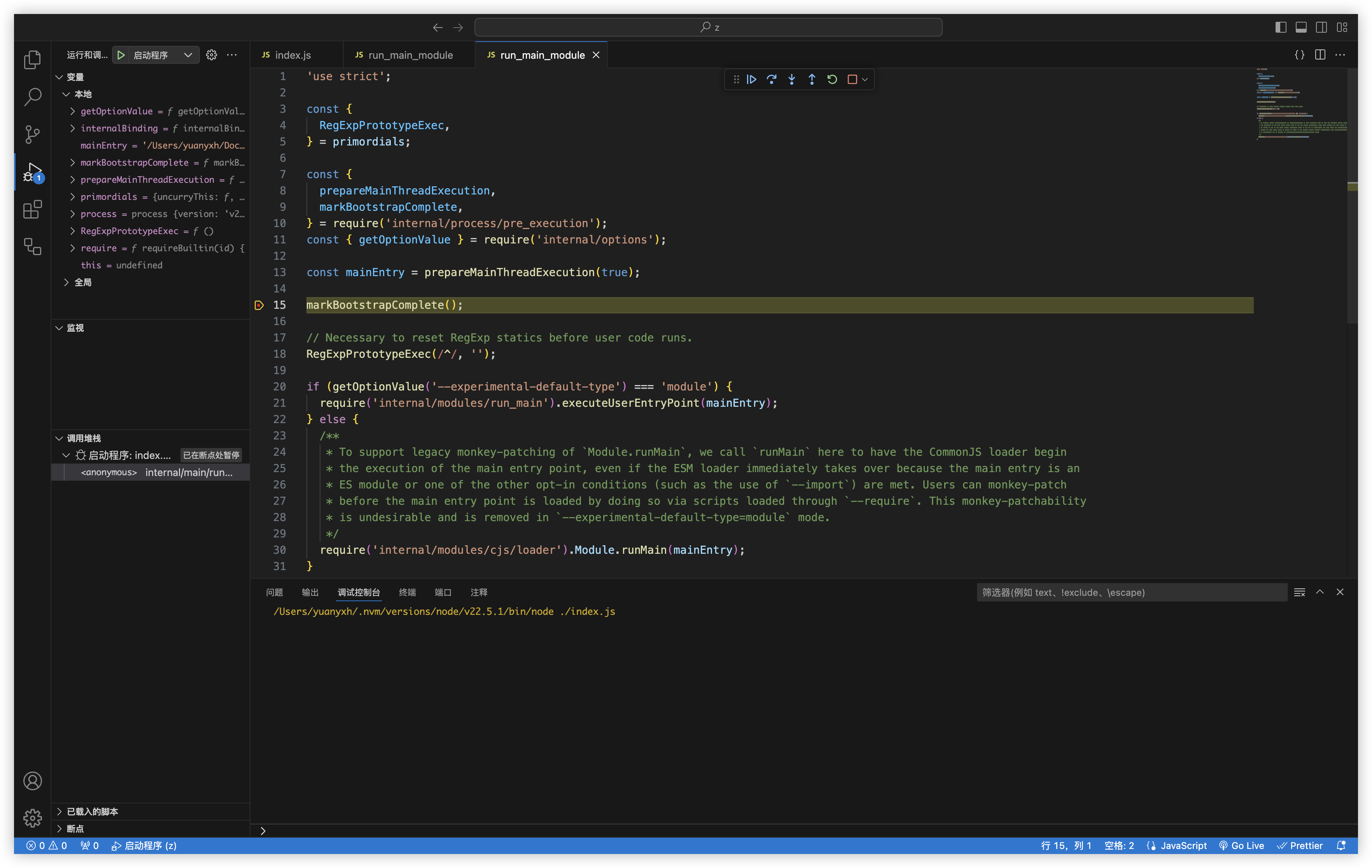
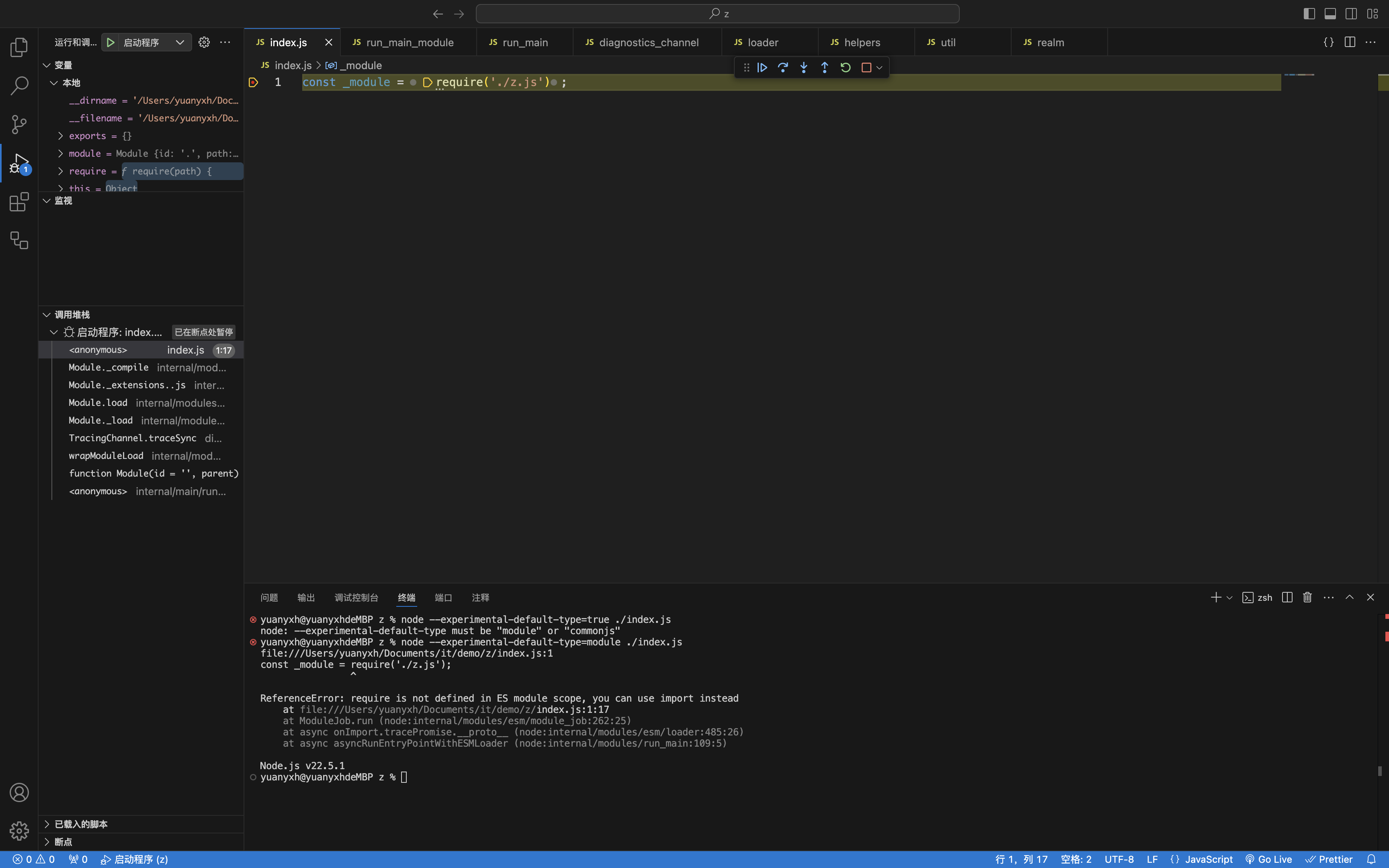








评论